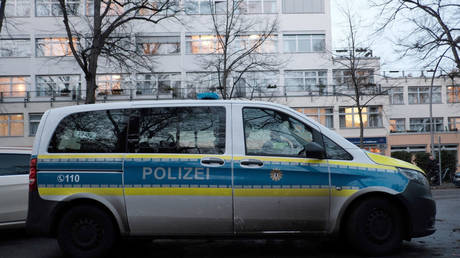ARTICLE AD BOX
WAITERS in a Spanish holiday hotspot are being forced to live in tents following a tourist property boom.
The stark increase in housing costs has seen shocking slum-like shanty towns pop up as some locals have no choice but to live in squalor.
 AFP
AFP AFP
AFPLow-paid service workers who are crucial to the tourism industry are being pushed out of the market because of the boom in holiday rentals in Tenerife.
This, along with the rising cost of living crisis, is causing a huge homelessness issue on the island.
Some are residing in caravans or are having to put up makeshift homes made from wood or prefabricated structures.
José, a 65-year-old kitchen assistant who works in a hotel, told The Telegraph how he was forced out of his apartment last year.
He rented the property for £340 a month before the landlord turned it into a short-term rental for holidaymakers.
He said: “Now anything with one or two bedrooms costs at least €900. I earn minimum wage, €1,100.
“If I have to pay that kind of rent, then we won’t be able to eat. Here we eat by cooking on gas.”
José Antonio Díez Dávila, coordinator of Mobile Street Outreach Units (UMAC) at Caritas Diocesana de Tenerife, told Canarian Weekly: “We have been sounding the alarm for years about housing access problems and homelessness in Tenerife, especially in the south.”
An analysis carried out by Caritas – a confederation of Catholic relief services – last year suggested that around 2,400 people across the island were living in shanties, substandard housing or other structures such as tents and campervans.
More than 770 homeless people were in 2023 based in the southern municipalities of Arona, Adeje and Grenadilla de Abona.
Many of those reduced to homelessness still have a job, but they can’t afford a home due to lack of living spaces, rent prices and mortgages.
It comes as thousands took to the streets of Tenerife to demand restrictions on holidaymakers after telling Brits to “go home”.
The anti-tourist hordes filled a square in the capital brandishing banners including some that read “You enjoy we suffer” in English.
More than 15,000 people waved Canary Islands’ flags and blew horns to make a deafening noise in capital Santa Cruz.
Protests also took place at the same time on other popular Canary islands including Lanzarote and Gran Canaria.
Anti-tourist movement
THERE have been many protests staged across Spain recently to try and combat mass tourism.
Tens of thousands of people are protesting across the Canary Islands to demand a freeze on the number of visitors allowed to visit the the Spanish archipelago.
So far demonstrations have taken place in Lanzarote, Gran Canaria, Santa Cruz.
Protesters have called the tourism strategy into question and have argued that life has been made unaffordable and environmentally unsustainable for residents.
The protests are supported by environmental groups including Greenpeace, WWF, Ecologists in Action, Friends of the Earth and SEO/Birdlife.
Anti-tourist protestors want the authorities to paralyse two projects including one which involves the construction of a five-star hotel by one of Tenerife’s last virgin beaches.
They are also looking for more protection from mass tourism – to help with the local environment, traffic and housing issues.
Other demands include the protection of natural spaces, a tourist tax and better working conditions for hotel cleaners, who joined the protest in Santa Cruz as they insisted to local press: “We are not slaves.”
More demonstrations are scheduled for the Spanish mainland in cities like Malaga and Madrid as well as London and Berlin.
Protestor Xiomara Cruz, who took part in Gran Canaria, said: “They made us believe that in the Canary Islands we live from tourism and what we want is the right of islanders to live in their land.”
Paula Rincon told local press: “It pains me that Canarians cannot afford to live in their own neighbourhoods.”
Campaigners have tried to distance themselves from anti-tourist graffiti which has appeared on walls and benches in and around southern Tenerife.
Bitter messages plastered in tourism hotspots over recent months have read “your paradise, our misery” and told “tourists go home”.
Tenerife particularly has gone to bat against sun-seeking Brits who have even called hotels on the island out of fear they may not be safe on their holidays.
Residents of the sun-soaked destination have said they are “fed-up” of “low quality” Brit tourists who only come for the cheap beer, burgers and sunbathing.
But the Canary Islands president Fernando Clavijo expressed his concern over the growing anti-tourism movement and begged holidaymakers to keep coming.
Brits will now be hit with a new tourist tax in Tenerife following the protests.
This latest proposal – known as eco tax – is part of the island’s new tourism strategy being drafted by the government of Canary Islands.
The island’s council confirmed the new tax system will come in effect from January 1, 2025, as residents of Tenerife demand a cut on holidaymakers.
The tax will be applied to all the famous nature sites that are protected, including the volcano Mount Teide, hamlets like Masca and several rural parks.
Officials say the new charge will help to protect and control the island’s natural spaces.
 AFP
AFP AFP
AFP.png)
 4 months ago
3
4 months ago
3








 English (US)
English (US)